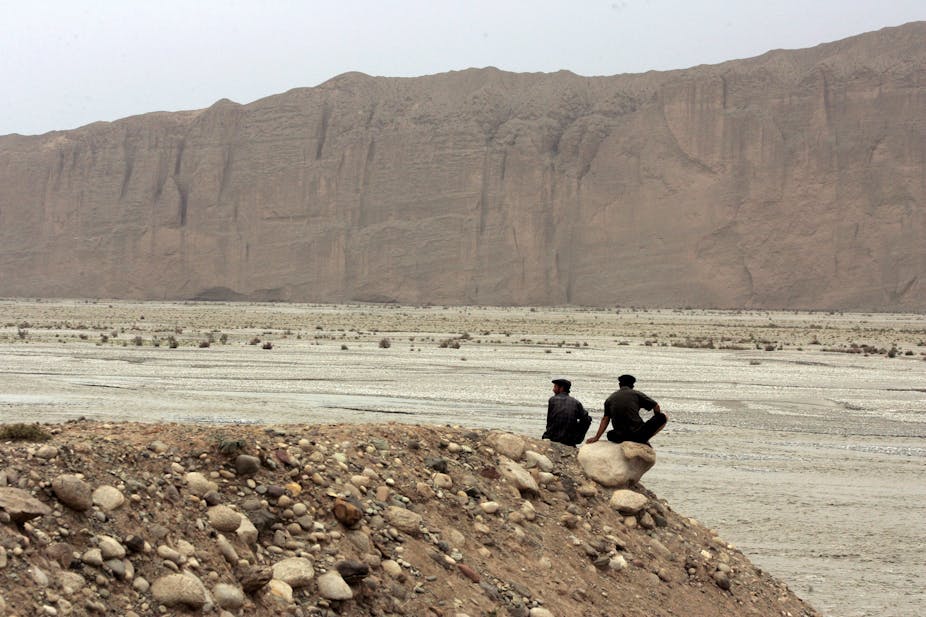As Borat tends to his pigs on his comely estate situated on the border of Kazakhstan and China, one of them flies across in a desperate attempt to look for better opportunities in the Fabled Land of Exploding Wealth.
Unbeknown to it, the little pig has created an international diplomatic stand-off almost immediately by tripping a state-of-the-art optical fibre network spanning the border for more than a thousand kilometres. Cameras record its image and convey it to an ever-ready crack team of Australian-trained border security specialists designed to take down any intruder…
This scenario might seem ridiculous to the casual reader, but the “Great Fence of China” is being built as this article is being read.
Optical fibre security fences are standard fare nowadays, and it is an Australian company, Future Fibre Technologies (FFT), that arguably leads the way for the time being, having spanned and netted sensitive places such as the White House.
But the exercise in China is of unprecedented significance and scale: using novel, home-grown random amplifier/laser technology, Chengdian Optical Fiber Sensing has been contracted to implement “The Great Fence of China”, more than a 1000 kilometres of optical fibre security along the border with Kazakhstan.
Regardless of whether it will focus on stopping livestock as claimed, or be used to stop porous arms supply to Muslim insurgents, this is an innovative development signifying yet another chapter in China’s evolution. New technology is becoming key to growth and wealth in the region - without engagement, Australia will fall behind just as the Europeans gain traction.
It was some time ago now that the 1989 Garnaut report Australia and the Northeast Asian Ascendancy first articulated the opportunities and warnings available to Australia as regional neighbours. It was largely ignored, with tokenistic ideas of Australia as part of Asia its greatest legacy. (At a recent conference in China, local organisers reminded International Steering Committee (ISC) delegates that Australia was not part of Asia, nor indeed of the Asian Century, reiterating Singapore’s stance on occasion.)
In 2011 the Garnaut vision was resurrected and adapted by then-Foreign Minister Kevin Rudd in China 2.0, and recently repeated in the Australia in the Asian Century White paper.
Yet even as these prescient opportunities are now being recognised, Paul Keating has reminded us Australia is increasingly aligning itself with the United States in unnecessary ways that undermine these very opportunities.
Perhaps the most alarming, and conspicuously quiet, development was the signing of the Defence Trade Controls Bill that has the power to control all interactions and collaboration that involve technology – civil, commercial and defence - in the region.
The most potent danger is creating a culture that removes the incentive for regional collaboration. The Liberals reversed their support for amendments giving Australia identical US standards, ensuring this Bill is significantly more restrictive than their own, which has anecdotally had a deleterious long-term impact on the US ability to engage in the region.
It is simply demeaning to the Australian public not to recognise the broader China containment approach and the implications for the type of inevitable conflict that Hugh White and others have warned of.
The reader may argue: “but Australian technology is so superior to the rest of the world, so doesn’t it make sense to close shop?” Delusions aside, even if Australia had the funds to carry on in isolation, it has struggled establishing major domestically supported commercial opportunities. In any case, Australia needs to access the growing Asian markets.
Former Queensland Premier Peter Beattie has recently lamented our lost opportunities in terms of innovation and, since any technology has defence parallels, this new legislation runs the risk of putting future opportunities further out of reach.
The scale of funding and change in China and the reach of the Diasporas, many of whom hold parallel positions in China, means in practice the new legislation also creates formidable compliance issues - and therefore disincentives.
Consider the current problems faced by universities under the Autonomous Sanctions Act to control Iranian students as an indicator of the potential grand scale of the problem in the education sector alone.
Australian researchers have generally been utterly dependent on international interactions with the world’s best institutions. Some of these are inevitably going to be in China just by virtue of funding and the region’s rising attraction to many overseas born scientists.
More notably, for the first time Chinese domestic IP is outstripping international IP in China and the reverse is happening in the United States – international IP is outstripping domestic IP.
Irrespective of current quality, growing domestic IP in a Chinese market will lead to IP infringement cases driven by domestic interests, a parallel evolution to that which had occurred in the United States for many decades after the second world war.
Just as Prime Minster Menzies gave away Australia’s inventions to the United States, preferring sheep to participation in Silicon Valley, Australia’s present leaders risk giving away Australia’s future innovations, preferring dirt to innovation and participation.
The centre of the world is no longer Europe or the United States. The largely United States-built metaphysical “Great Fence of Australia”, a land of dirt-based energy, could deny Australia access to key markets, key education and key technological growth, potentially making this nation the New Middle East of the 21st century.

